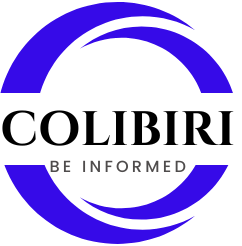Automating Workflows with AI: A Guide to Transforming Your Productivity
Artificial Intelligence (AI) is far more than just a buzzword today. It is transforming how businesses design, execute, and optimize their operations. One of its most powerful applications? Workflow automation.
Imagine a system capable of processing emails, qualifying leads, generating reports, or resolving support tickets – all without direct human intervention. That’s exactly what AI enables. And it’s not just for big tech companies anymore – every organization can benefit.
What Is a Workflow and Why Automate It with AI?
A workflow is a series of steps (tasks, decisions, validations, etc.) required to complete a business process. Traditionally, these are carried out manually, exposing the business to delays, overloads, and human error.
AI-powered automation goes far beyond simple task chaining:
- It analyzes, learns, and optimizes in real-time
- It handles unstructured data (emails, documents, natural language)
- It adapts to complex and evolving scenarios
It represents a radical shift in the way internal activities are managed.
Why Adopt AI Workflow Automation Now?
Here are the key reasons why AI has become essential for modern workflow management:
- Increased Efficiency
Repetitive tasks are executed instantly — email sorting, CRM updates, file transfers — reducing delays and speeding up project delivery.
- Fewer Human Errors
AI follows tested models and learns from past errors to ensure reliable execution.
- Better Use of Time and Resources
Employees are freed from operational burdens and can focus on high-value tasks.
- Real-Time Adaptability
Unlike rigid processes, AI adjusts workflows based on incoming data, priorities, or new rules.
- Improved Customer Experience
Faster, more consistent, and personalized responses enhance client satisfaction.
Key Components of an AI-Powered Workflow
To enable AI to manage part or all of a business process, multiple technologies come into play:
- Machine Learning (ML)
Allows systems to adapt based on historical data and make predictions or recommendations.
- Natural Language Processing (NLP)
Enables AI to read, understand, and generate human language for tasks like email replies or text analysis.
- Intelligent Automation
Combines conditional rules with adaptive logic, enabling context-aware decision-making.
- APIs and Connectors
Crucial for linking tools (CRM, ERP, email, e-commerce platforms) and streamlining data exchange.
- Robotic Process Automation (RPA)
Handles rule-based tasks like data entry, file processing, and navigating software.
Practical Use Cases Across Key Departments
Marketing
- Automatic lead qualification
- Email campaign personalization
- Ad performance analysis
- Automated reporting
Sales
- Automated follow-ups
- Smart scheduling
- Lead data integration into the CRM
Human Resources
- Automated onboarding
- Application screening
- Training reminders or HR deadlines
Finance & Accounting
- Financial report generation
- Invoice automation
- Expense tracking and budget alerts
IT & Support
- Automatic ticket assignment
- Initial diagnostics
- Predictive maintenance
Traditional vs. AI-Powered Automation
| Feature | Traditional Automation | AI-Driven Automation |
| Based on | Fixed rules | Learning & adaptation |
| Data handled | Structured only | Structured + unstructured |
| Decision-making | Predefined | Real-time, dynamic |
| Scalability | Limited | High, self-adjusting |
| Autonomy level | Low | Medium to high |
Steps to Build a High-Performance AI Workflow
- Map Your Current Processes: Identify pain points and repetitive, time-consuming tasks.
- Define Clear Objectives: Are you aiming to save time, reduce errors, or boost satisfaction?
- Choose the Right Tools and Technologies: Prioritize platforms that integrate easily with your existing systems.
- Design Your Automation Scenario: Determine when AI should act, what data it needs, and what it will do.
- Train Your Teams: Support change management, ensure tool adoption, and clarify the strategy.
- Measure and Optimize: Track KPIs such as cycle time, error rate, and automation coverage.
Key Performance Indicators to Track
- Average process completion time
- Automation rate (AI-managed vs. manual tasks)
- Pre- vs. post-automation error rate
- Client satisfaction or NPS
- Cost/time savings (hours saved, reduced software costs)
Best Practices for Successful AI Automation
- Start small, scale smart: Automate one process first, then expand.
- Involve business users early to ensure relevance and adoption.
- Ensure data quality, which is critical for accurate algorithms.
- Balance AI with human input, AI is a support, not a replacement.
- Stay compliant with regulations (GDPR, data security, etc.).
Common Challenges to Anticipate
▪️ Resistance to Change
Teams may fear loss of control or purpose – communication and training are key.
▪️ Lack of AI Skills
Use user-friendly tools or rely on external specialists when needed.
▪️ Initial Implementation Costs
Despite long-term savings, budget for tools, training, and system integration.
▪️ Data Governance
AI often handles sensitive data – define clear usage rules and ensure security.
Key Trends to Watch in 2025+
- Hybrid workflows mixing AI and human intervention
- Conversational AI embedded in processes (via chat, voice assistants)
- No-code + AI: empowering business users to create automations
- Contextual automation triggered by user behavior or live data
- Full interoperability between AI, cloud, and enterprise tools
